Scientists study subatomic particles by examining the telltale trails, such as those shown here, their passage leaves behind in a bubble chamber. This image shows the first detection of a neutrino.
Click on image for full size
Argonne National Laboratory
Atomic Physics & Particle Physics
Atoms and the tiny particles from which they are made strongly influence
the world around us.
The fields of atomic physics and particle physics help us understand
the life cycles of stars, the forms of radiation in space, and the way we
can use spectra to study distant objects.
The discipline of atomic physics concerns itself with atoms, the particles
from which atoms are made, and the various energy states that atoms can take
on. The tiny, dense nucleus of an atom is made up of protons and neutrons.
Clouds of electrons, less than a thousandth the size of the nucleons, buzz
around the nucleus in a complex array of energy states.
Particle physics delves into scales even smaller than the atom as it sheds
light on the worlds of subatomic physics. When atoms are torn apart, usually
in the presence of large amounts of energy, subatomic particles come out to
play. Some are familiar, such as protons, neutrons, and electrons; others are
more exotic, bearing strange names like muon, neutrino, baryon, meson,
and the elusive quark. Plasmas, such as the "soup" of electrons and protons
that makes up the solar wind, and many of the most dangerous forms of radiation,
such as cosmic rays, are collections of subatomic particles.
The "laws" of physics at atomic and subatomic scales are so different from
those we observe in our "normal" daily experiences that physicists had to invent
a whole new field to describe them. The discipline of quantum mechanics predicts the strange behaviors found
in the worlds of the very small.
You might also be interested in:
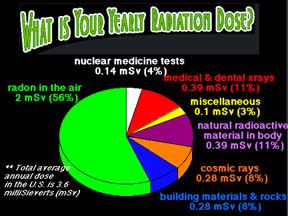
Radiation comes in two basic types: electromagnetic radiation transmitted by photons, and particle radiation consisting of electrons, protons, alpha particles, and so forth. Electromagnetic radiation,
...more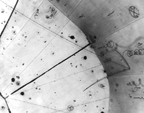
The neutrino is an extremely light particle. It has no electric charge. The neutrino interacts through the weak force. For this reason and because it is electrically neutral, neutrino interactions with
...more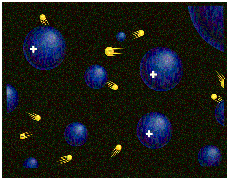
Plasma is known as the fourth state of matter. The other three states are solid, liquid and gas.In most cases, matter on Earth has electrons that orbit around the atom's nucleus. The negatively charged
...more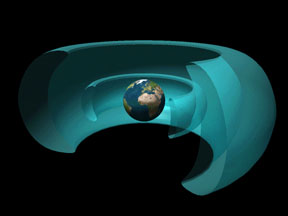
One main type of radiation, particle radiation, is the result of subatomic particles hurtling at tremendous speeds. Protons, cosmic rays, and alpha and beta particles are some of the most common types
...more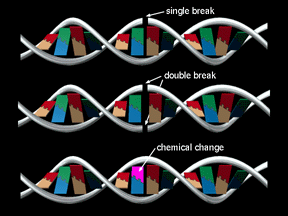
Whether or not a cell can repair itself after being damaged by radiation depends on the type of damage to the cell's DNA. Type of Damage Prospects for DNA Repair Single strand break in the DNA Can usually
...more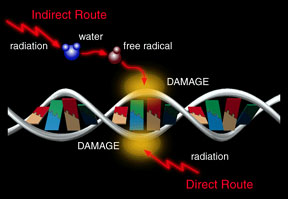
High frequency radiation or fast moving particles plow into a living cell with enough energy to knock electrons free from molecules that make up the cell. These molecules with missing electrons are called
...more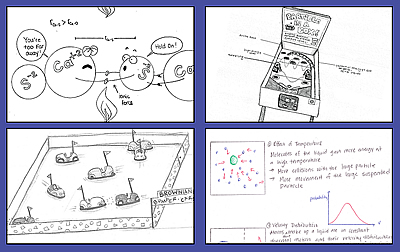
Could you explain chemical processes like photodissociation with a drawing? How about bonding in molecules or quantum physics? That’s what students at several colleges have been doing. They are not just
...more














